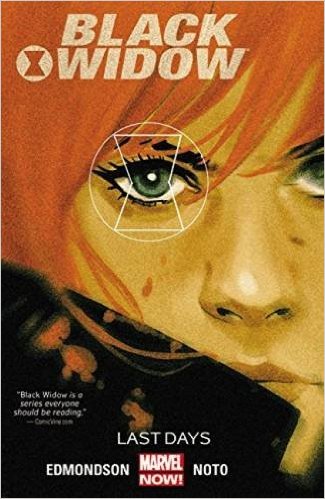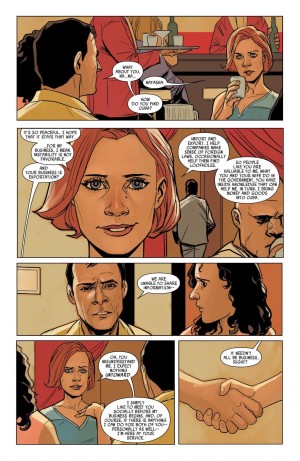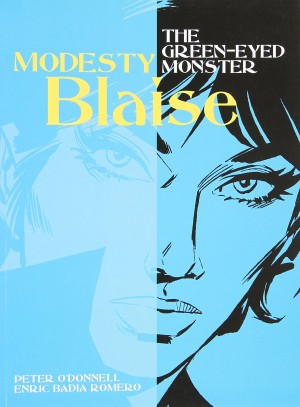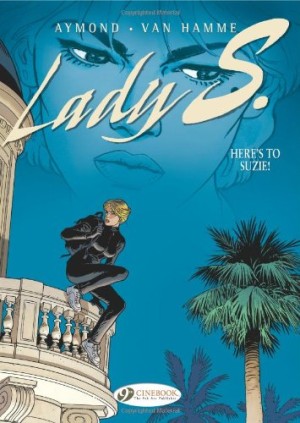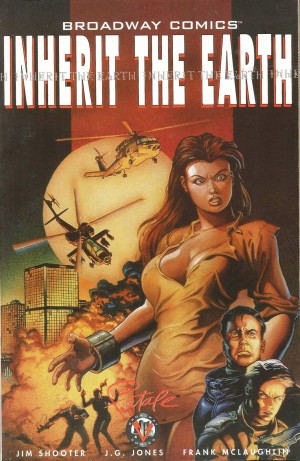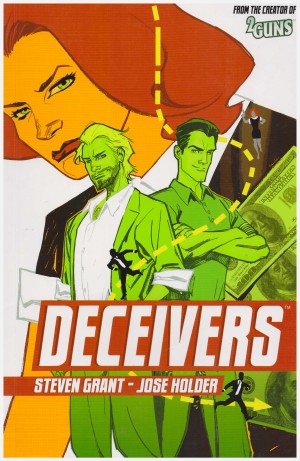Review by Ian Keogh
This series of Black Widow has puzzled to date. Stylish? Certainly. Compelling? Close, but not quite the cigar. Credible? And that’s when we run into concerns. Black Widow is being jerked from pillar to post by an organisation named Chaos. Experienced as she is, she follows the clues, and every time just about escapes with her life. Why, one would almost think this is calculated. Despite having her accounts emptied, her agent and lawyer almost killed, and her ethics plastered all over a TV documentary (see The Tightly Tangled Web), Natasha still really has no clue as to who her foes are. Now, though, she has a list of operatives in various locations, so from the start of Last Days she’s off and running and taking the campaign to Chaos.
Nathan Edmondson provides answers to all the questions he’s instigated, although whether they’re answers to be appreciated by anyone who’s read this far is another matter. Midway through the book there’s an abrupt shift as Nastasha is given a little insight into what’s been happening, but for anyone who’s been following the series the primary question is “Why?”. Nothing contradicts the given explanation as lies, and anyone with half a mind could conceive of far simpler and more effective ways to achieve the same ends rather than repeated threats. It undermines the credibility and diminishes the series overall.
Phil Noto’s art is as impressive as it has been over the previous two books, although he’s now relying less on the colouring adding detail, and applying more lines to the art. He’s exceptional with his digital tools, though. At one point an invisible person is required, and Noto supplies a transparent white body that at first seems to be part of the background until you cotton on.
Thankfully, even within the Chaos story there are rewarding aspects, not least the pages devoted to Black Widow’s first use of a gun. That feeds into the two chapters that give this volume it’s title. These harken back to the Black Widow’s days as a Soviet operative, and the Cuban setting offers Noto plenty of opportunities to shine with the landscapes. Edmondson sets up a ghastly dilemma and after three books it’s only in the final chapter that we really know what the Black Widow was. Will we like her? It’s a spine-crawling story, yet cleverly takes us in circular fashion back to the opening chapter in The Finely Woven Thread for a final question to that point unanswered.
Despite misgivings about the way his primary plot played out, Edmondson has supplied thrilling action on a regular basis, and not only is Noto accomplished, but it’s a relief to see twenty chapters by the same artist. No gaps, no fill-ins.
